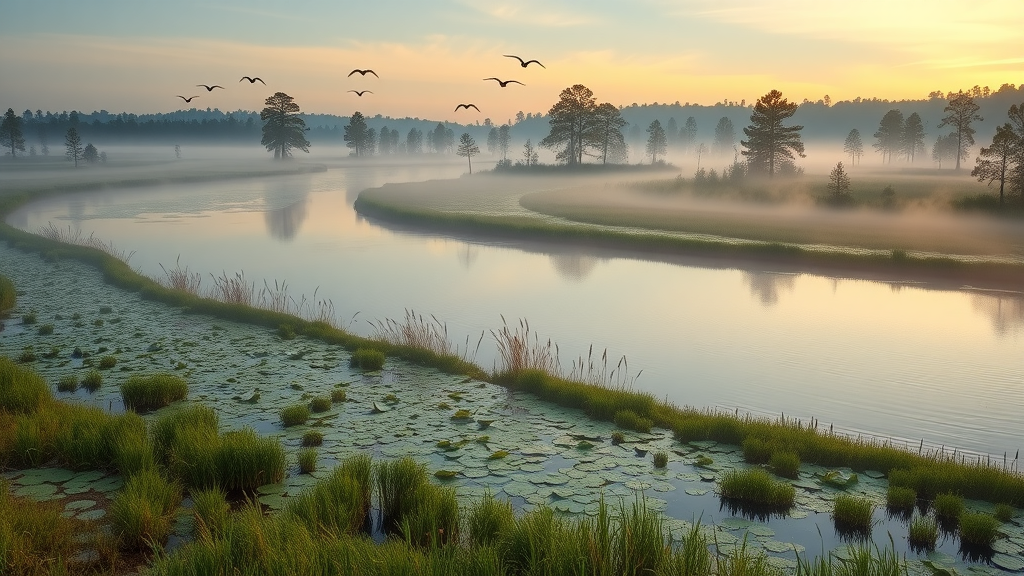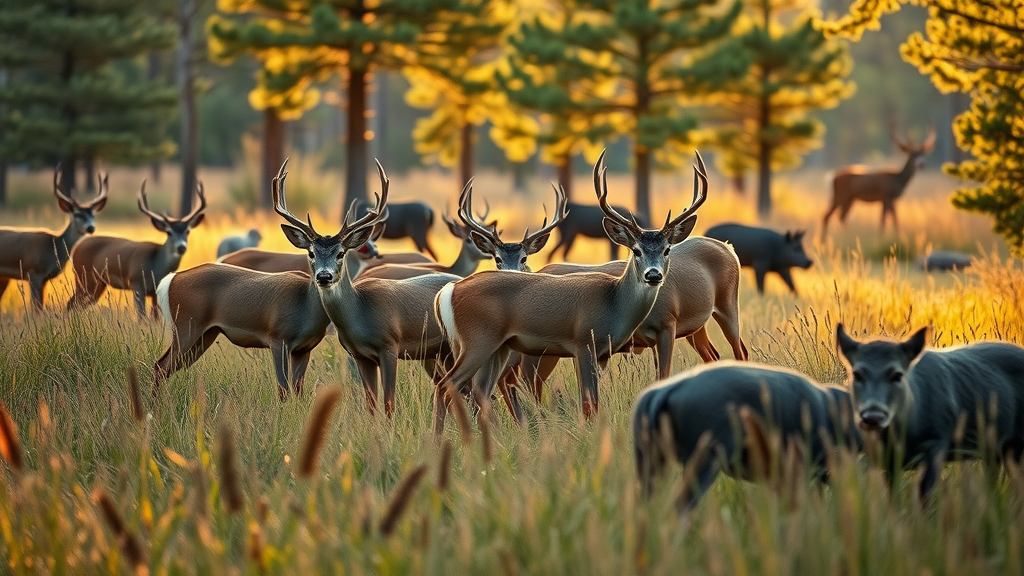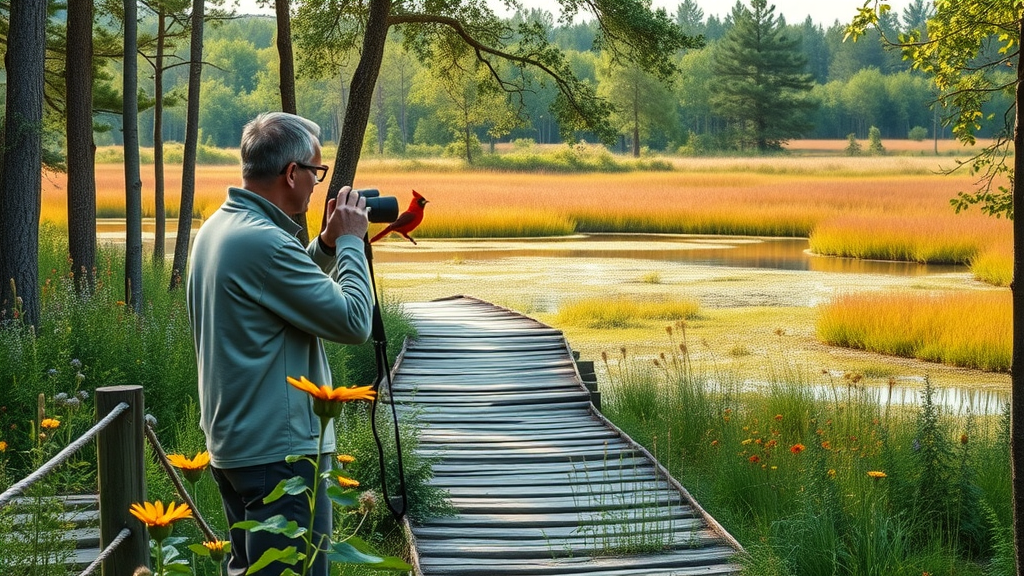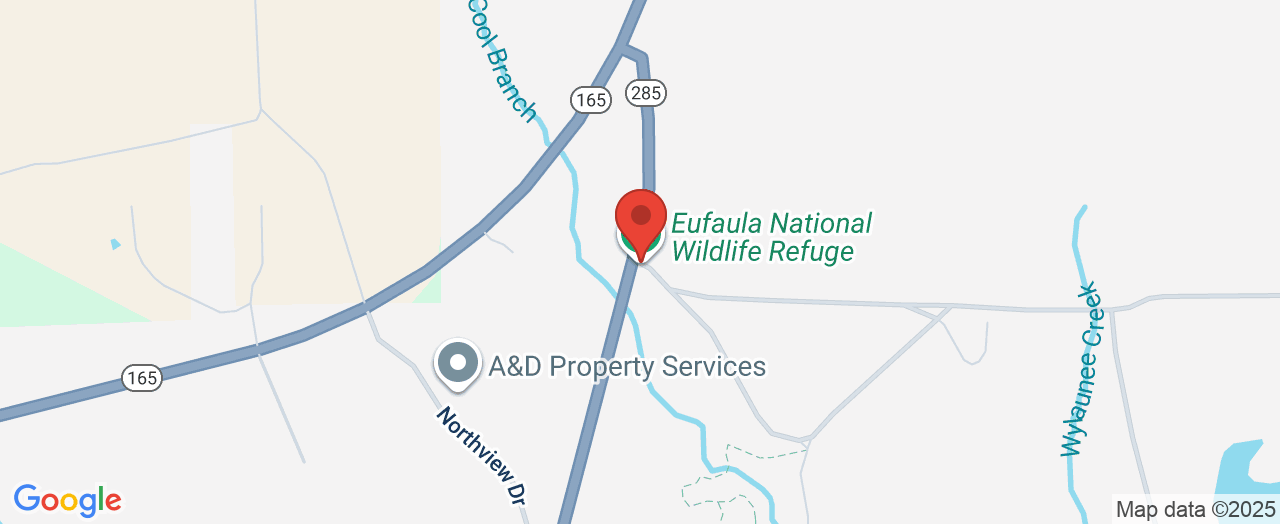Unlocking a Natural Sanctuary: Why Eufaula National Wildlife Refuge Captivates Every Explorer
Imagine a place where the boundaries between land and water blur—where nearly 300 species of birds rise from misty wetlands and ancient longleaf pines guard the banks of a winding river. As interest in outdoor escapes grows and people search for unspoiled landscapes, such unique habitats are vanishing fast. The Eufaula National Wildlife Refuge stands as a rare testament to nature’s resilience and the power of community-driven conservation. What draws both seasoned wildlife watchers and casual visitors to this refuge, and why does it matter now more than ever?
Eufaula National Wildlife Refuge offers much more than sweeping vistas. Situated along the historical Chattahoochee River corridor, the refuge protects a vibrant mosaic of environments—wetlands brimming with life, remnant stands of longleaf pine, croplands, grasslands, and waterscapes freckled with lilies. Yet, for all its natural beauty, the real story lies in how this diverse ecosystem plays a critical role for wildlife and humans alike. Understanding the hidden workings of the refuge isn’t simply an exercise in local interest; it unlocks lessons about biodiversity, ecological health, and the legacy of conservation that impacts us all. For those curious about the deeper value of these natural spaces, the Eufaula National Wildlife Refuge is a living example worth exploring in detail.

Biodiversity Unveiled: The Dynamic Landscape and Life of Eufaula's Refuge
The Eufaula National Wildlife Refuge is a patchwork of habitats, each supporting a unique web of life. Established in 1964 with broad community advocacy, the refuge was specifically designed to support wintering waterfowl, but its influence has blossomed far beyond. The refuge now encompasses over 11,000 acres stretching across both banks of the Chattahoochee River in southeast Alabama and southwest Georgia—embedding itself within the historical longleaf pine and wiregrass ecosystem. The result is a rare and fragile setting where woodlands, old fields, seasonally managed wetlands, croplands, grasslands, and open waters all converge.
Nearly 300 bird species call Eufaula home at some part of the year, creating a haven for ornithologists and amateur birders alike. Add to that over 40 species of mammals and a diverse assortment of reptiles, amphibians, and fish, and the value of this sanctuary comes into sharper focus. The refuge is not just a destination; it is a critical waypoint for migratory species and a safe harbor for resident wildlife. Without such rich and varied habitats, many of these species would struggle to survive. A visit to Eufaula means witnessing firsthand what is at stake in the ongoing challenge of conservation—and the consequences that may follow if places like this are not protected and understood.

Mosaic Habitats: How Eufaula Builds a Stronghold for Wildlife and People
Eufaula National Wildlife Refuge’s story is woven from its commitment to ecological stewardship. Initiatives such as longleaf pine restoration, management of agricultural and seasonal wetlands, and the removal of invasive species shape the land into a living laboratory of conservation. For visitors, each habitat presents an opportunity to see different wildlife communities thriving in their natural states—whether it’s witnessing white-tailed deer darting across woodlands, or observing rare waterfowl amid the lily-spotted waterscapes.
But the value isn’t limited to wildlife alone. For families, amateur naturalists, and adventure seekers, Eufaula offers a fully immersive experience—one that is educational, peaceful, and deeply connected to the rhythms of the land. Its carefully managed trails and viewing areas invite safe exploration, while preserving the critical microhabitats essential for wildlife health. The careful balance of active habitat management with public access distinguishes this refuge. It means visitors not only witness biodiversity firsthand but also gain a deeper appreciation for the self-sustaining systems that make such places thrive, encouraging stewardship and respect that ripples far beyond the refuge’s borders.
From Conservation Roots to Modern Management: Eufaula’s Ongoing Legacy
The origins of Eufaula National Wildlife Refuge are grounded in joint effort—built from both grassroots community action and the expertise of organizations like the U.S. Army Corps of Engineers. This legacy continues today through evolving habitat management practices that reinforce its regional importance. Techniques like prescribed burning and agricultural wetland management maintain open habitats and mimic natural cycles, ensuring the right conditions for a variety of species.

Ongoing projects don’t just react to immediate wildlife needs; they anticipate future challenges, such as invasive species, shifting climate patterns, and human-wildlife interactions. In this way, Eufaula becomes more than a protected space—it is a testing ground for best practices in modern conservation. Its adaptability ensures that migratory waterfowl, as well as resident species like mammals and amphibians, will always have a haven along the Chattahoochee River.
Planning Your Visit: Safety and Success in Wildlife Viewing
Exploring Eufaula National Wildlife Refuge rewards those who approach with patience and mindfulness. Whether by car or along well-maintained trails, visitors regularly report close encounters with black wild hogs, alligators basking in the sun, and rare or seasonal birds. The advice from seasoned explorers is clear: drive slowly, keep your eyes peeled, and be prepared for spontaneous sightings, from wading cranes to blooming wildflowers.
While the refuge is welcoming, some practical precautions make a world of difference. Sticking to marked roads and paths not only protects delicate habitats but also maximizes personal safety—especially in areas where wildlife like wild pigs or alligators are present. By respecting the boundaries established for both wildlife and visitors, every trip becomes richer, safer, and more sustainable.
Nurturing Tomorrow’s Wild: Education and Community at Eufaula

Education is at the heart of Eufaula’s mission. As stewards of a living classroom, the refuge offers ample resources for individuals, families, and school groups to learn about conservation, habitat management, and species identification. Brochures and online guides provide context about the area’s historical ecosystem and up-to-date information on recreation opportunities like fishing and hunting.
The refuge’s philosophy emphasizes not only the protection of wildlife but also the empowerment of visitors to become more informed and environmentally responsible. By fostering curiosity and engagement, the refuge sows the seeds for a new generation of conservationists who will continue to cherish and protect such spaces in the decades ahead.
Championing Longleaf Pine and Wetlands: Eufaula’s Role in Regional Biodiversity
Among the most significant contributions Eufaula makes is the preservation and restoration of the longleaf pine ecosystem—a once-vast landscape that now survives only in fragments across the Southeast. Active restoration efforts ensure that these ancient trees, and the unique species they shelter, continue to thrive. Prescribed burning and selective planting revive the historical balance of the pine-wiregrass community, benefiting everything from red-cockaded woodpeckers to vital pollinators.
Agricultural lands and seasonal wetlands are managed not just for productivity but as essential links in the chain of regional biodiversity. By maintaining these mosaics, Eufaula sets a standard for other refuges and land managers across the country. Every acre protected here contributes to the resilience of larger wild systems, mitigating threats from invasive species and other environmental pressures.
A Visitor’s Experience: Seeing the Wild Through Fresh Eyes
Nothing illustrates the magic and diversity of Eufaula National Wildlife Refuge better than a firsthand account. Many visitors describe a sense of wonder and unexpected excitement while exploring its trails and viewing points, as wildlife appears spontaneously and the sounds of nature fill the air. The following words, shared by a recent explorer, capture the essence and thrill of discovery that draws people to this unique sanctuary.
We drove through it the last weekend of March 2023. We saw all kinds of wildlife. We saw 6 black wild hogs. 1 was an adult. We saw one 12 foot alligator. We saw 9 baby/teenage alligators. We saw 2 white tailed deer. We saw beautiful waterscapes, and Lilly pads in bloom. We saw many birds (White cranes, one large black crane, two weird black birds that danced in the water, a weird brown bird with a long squiggly neck, a cardinal, water fowl, and many others). Beautiful trees, new species of flowers (some were kinda ugly ngl). The weather was perfect just drive slow and keep your eyes peeled. I wouldn’t suggest going on foot or by bike tho, ngl.
Accounts like this serve as testament to the refuge’s power to inspire awe and deepen respect for wild places. Each successful visit adds new stories to the tapestry of Eufaula, demonstrating the endless possibilities for connection with the natural world when one is open to slowing down and being present in the moment.
Why Eufaula National Wildlife Refuge Matters Now More Than Ever
In a time when natural landscapes are under unprecedented pressure, the Eufaula National Wildlife Refuge stands out as both a sanctuary for wildlife and a source of learning and connection for people. Its expert-driven habitat management and commitment to ecological education set a crucial standard for conservation across the region. With every acre protected and every visitor inspired, the refuge proves that places like Eufaula are not only worth preserving—they are vital to understanding the interdependence of all life.
As an authority in land stewardship and wildlife protection, Eufaula continues to show how active management, community involvement, and a passion for education can create a brighter future for both nature and society. For those seeking firsthand adventure or a deeper appreciation of the natural world, the wonders of Eufaula National Wildlife Refuge are waiting to be discovered, explored, and cherished.
Contact the Experts at Eufaula National Wildlife Refuge
If you’d like to learn more about how the Eufaula National Wildlife Refuge can deepen your connection with nature and enhance your appreciation for wildlife, contact the experienced team at Eufaula National Wildlife Refuge.
📍 Address: 367 AL-165, Eufaula, AL 36027, USA
📞 Phone: +1 334-687-4065
🌐 Website: https://www.fws.gov/refuge/eufaula
Where to Find Eufaula National Wildlife Refuge and Current Hours
🕒 Hours of Operation:
Please refer to the official refuge website or contact the office directly for the most current hours of operation, as they may vary seasonally or due to management needs.

 Add Row
Add Row  Add
Add 





Write A Comment